Are you anxious to know if you have wood floors underneath that outdated carpet? You don’t have to tear out all of your flooring to find out! Here is an easy way to know before you rip out your carpet.
Hardwood floors add warmth, character, and beauty—not to mention increased value—to any home lucky enough to have them. Wood flooring can be costly to install, however, so homes are like diamonds in the rough when they already have wood floors hidden under carpet.
I have the perfect trick for you. It’s been so helpful to us in all of our house hunting over the years. Keep reading to know this simple trick that could save you a lot of money and effort!
For more flooring options, check out my brick floors and the BEST sisal rug that you can actually clean! See the end of this post for even more flooring resources!
Carpet Over Wood Floors
Hardwood floors were the norm in most homes before WWII. The design of the home didn’t matter—Victorian, Colonial, Cape Cod, Tudor, Craftsman, and even early Ranches—they all featured wood floors throughout.
Then starting in the 1950s, homeowners started to favor wall-to-wall carpet instead. This trend was partly because the quality of carpet had improved drastically in recent years. It could also be because, after so many years of “doing without” during the war, maybe they simply wanted the luxurious look and feel of carpet underfoot.
For whatever reason, homeowners started to install carpet right over the top of perfectly good wood floors. This trend lasted for a few decades. Then starting in the 1980s, homeowners started to return to the warmth of wood floors. By the 1990s and early 2000s, wood floors were in high demand again.
Today, houses that have wood floors are highly desirable. They’re also expensive to install new, so that leaves many of us wanting to know if we already have them!
How to Know if You Have Wood Floors
This is an especially helpful tip if you are house hunting. If you’re looking at older homes that haven’t been updated in a while, you’re likely to see a lot of carpet, even in kitchens and bathrooms.
Wood floors may impact an offer your make on a home purchase. I, for one, would be willing to offer more for a house if I knew it had wood floors throughout. You want to know what is underneath that old shag carpet, but you can’t tear apart every house your realtor shows you.
Remember that houses built in the 1950s or earlier are more likely to have wood floors under carpet, but that doesn’t mean a house built in the 1960s won’t have it. Even though carpet started becoming more popular in the 1950s, the trend took a while to fully catch on.
You’ll be less likely to discover wood floors in a house built in the 1970s and 1980s, but that doesn’t mean it’s impossible. You should definitely still use this simple trick to find out for sure!
The trick is to remove floor vents! Look for any floor vent you can find, and carefully pull it up to remove it. They are rarely secured down in any way, so they’re easy to take out.
The carpet won’t be tacked down around the edge of the vent opening, so you’ll be able to easily pull the carpet and pad up just enough to see what is underneath.
You may be lucky and find hardwood floors. Or you may see layers of linoleum. Either way, you’ll be glad to know what is under those carpets, so you can make informed choices.
Make sure to check floor vents wherever you see them. A house may have wood floors in one or two rooms but not throughout. Don’t assume there are hardwood floors everywhere based on seeing them underneath one vent.
If a house doesn’t have an accessible floor vent, go to the basement and look up. You’ll likely see subflooring, but you maybe able to catch glimpse of hardwood flooring around cutout areas like pipes and vents.
Be careful when looking for wood on stairs. What may look like full wood stair treads with a runner up the center, may just be beautiful wood on the edges and plywood under the runner. Some homes do this to create the illusion of wood stairs without the expense.
Again, tuck your fingers underneath to see if the wood continues underneath the runner or not. Read about our wood stair makeover here.
If you own your home and the above methods don’t work, you can always find a discreet area and pull up a few inches of carpet in a corner from underneath baseboard. Use a butter knife to tuck the carpet back under the baseboard once you’re done.
Our home didn’t have wood floors underneath the carpet. We used this trick and discovered poorly installed parquet in the office instead. If you don’t find wood floors either, you may like reading about the hardwood floors we had custom made for the Colonial!
Refinishing Wood Floors
Remember that just because a home may have wood floors, doesn’t mean they are in pristine condition. Some may have scratches, stains, or water damage.
The beauty of wood floors is that they can be sanded down and refinished to look like new! If the floors have imperfections – or you just want to change their color – you may be able to fix them without too much trouble.
If you’re concerned about areas that have a lot of damage, consult a professional to know if the floors can be sanded down sufficiently. Professionals can also repair broken or missing floorboards, and stain the new areas to match the old. It’s amazing!
Or if you’d rather do the job yourself, you can rent floor sanders at most home improvement stores. It will make a dusty mess, but it could save you a lot of money.

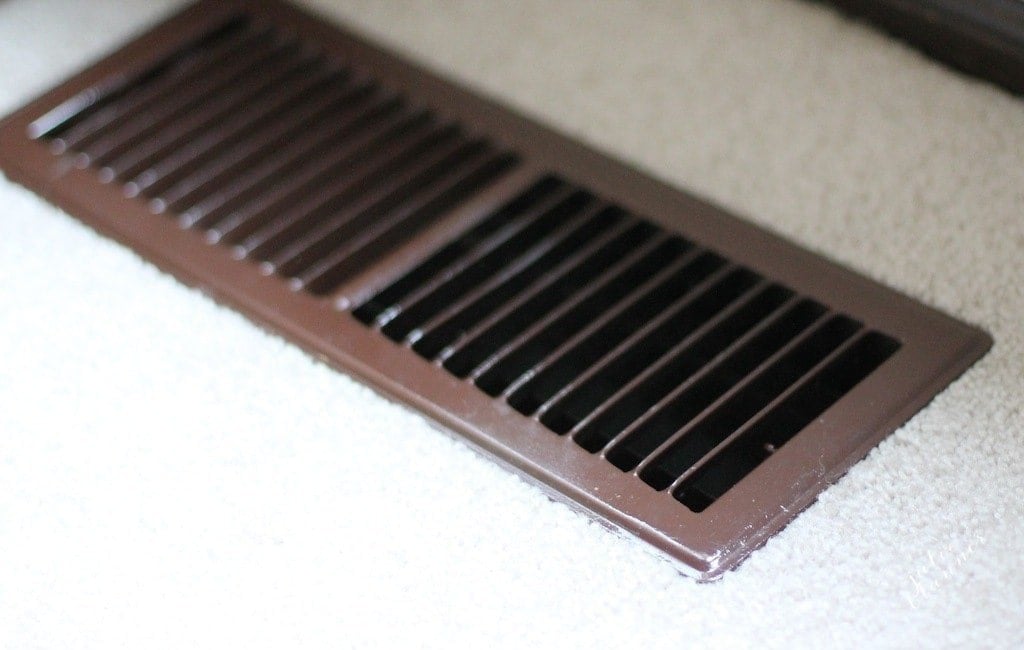
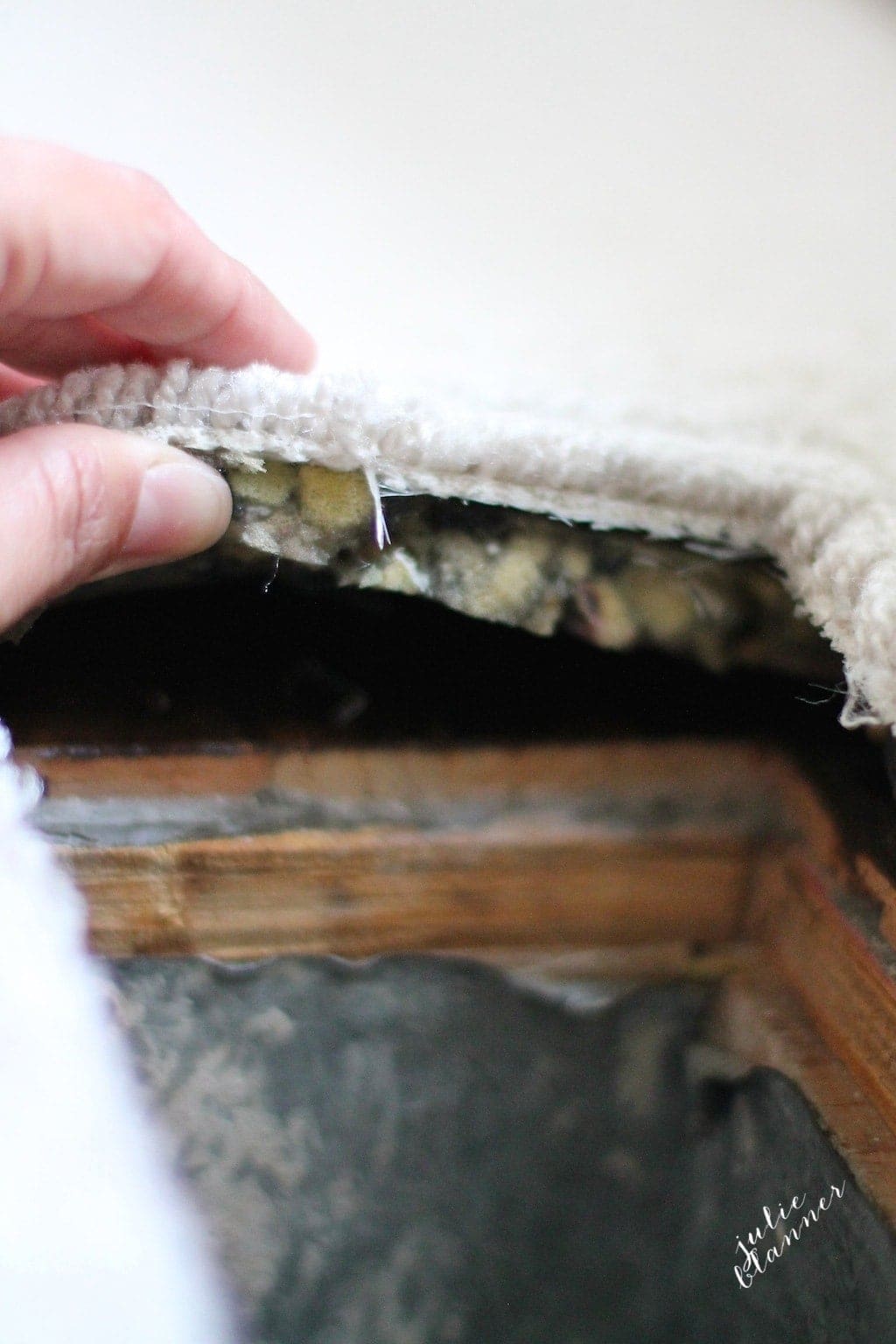
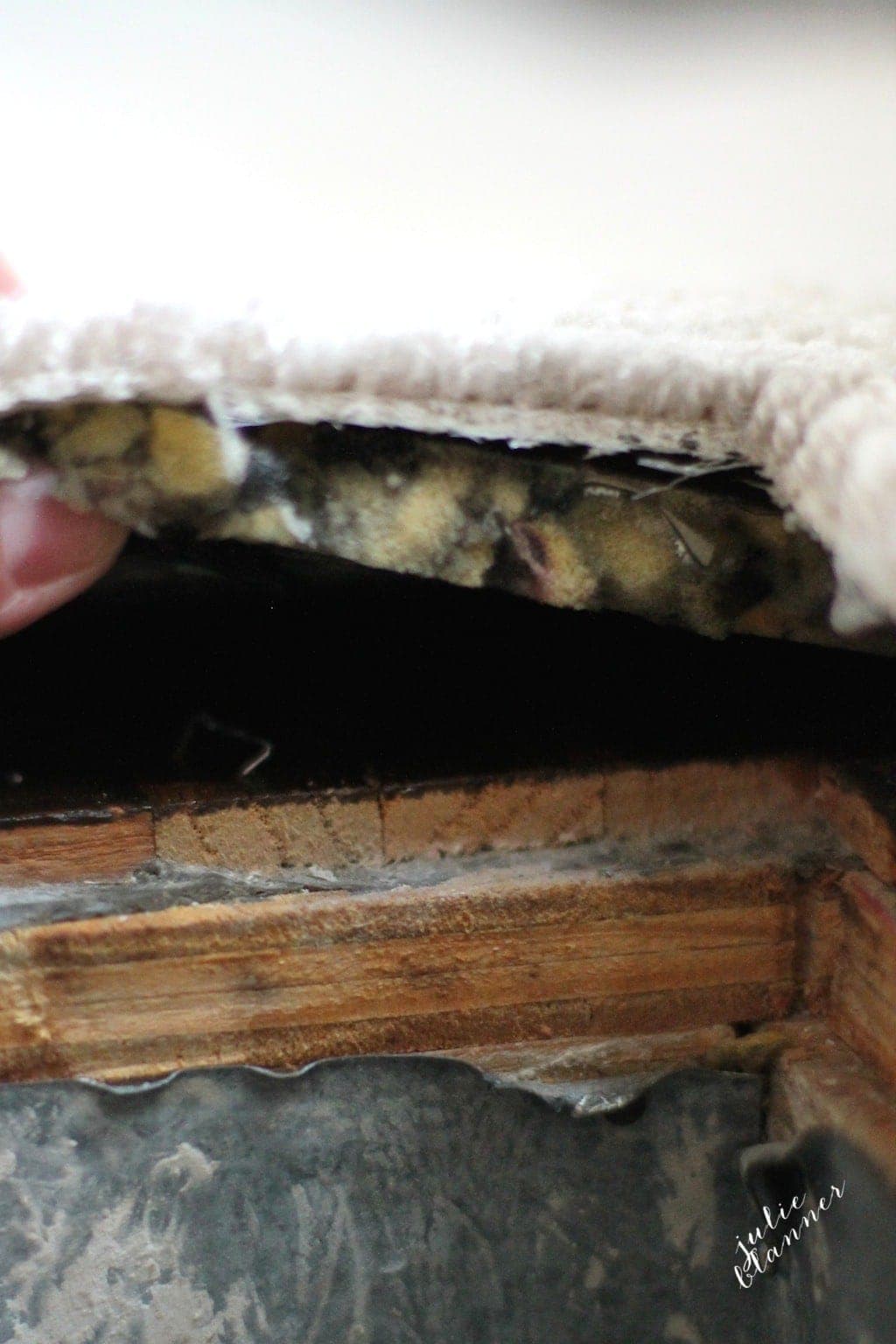
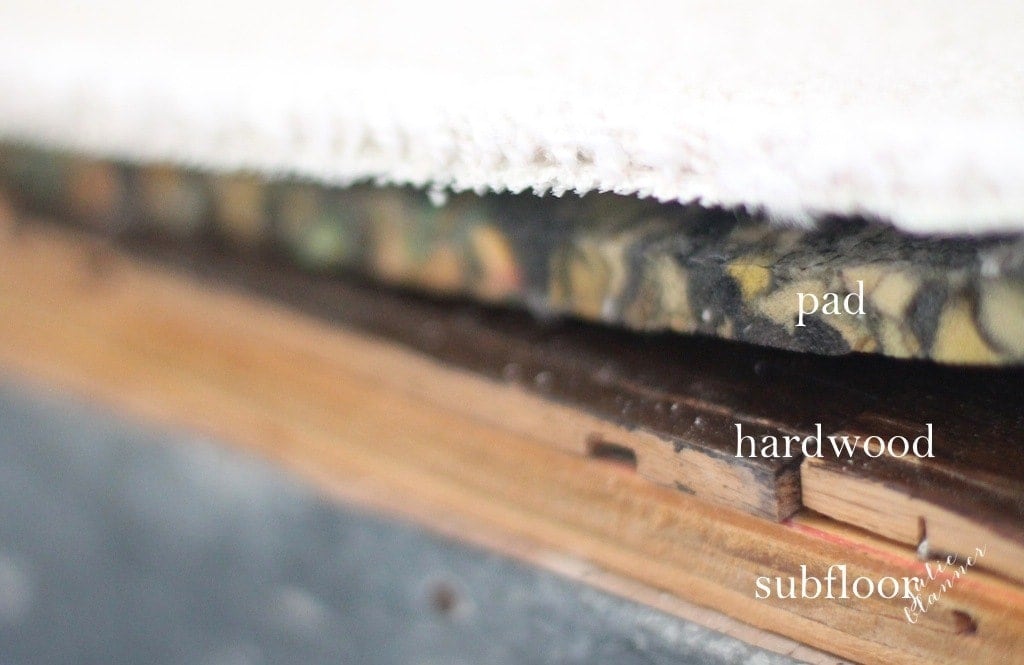
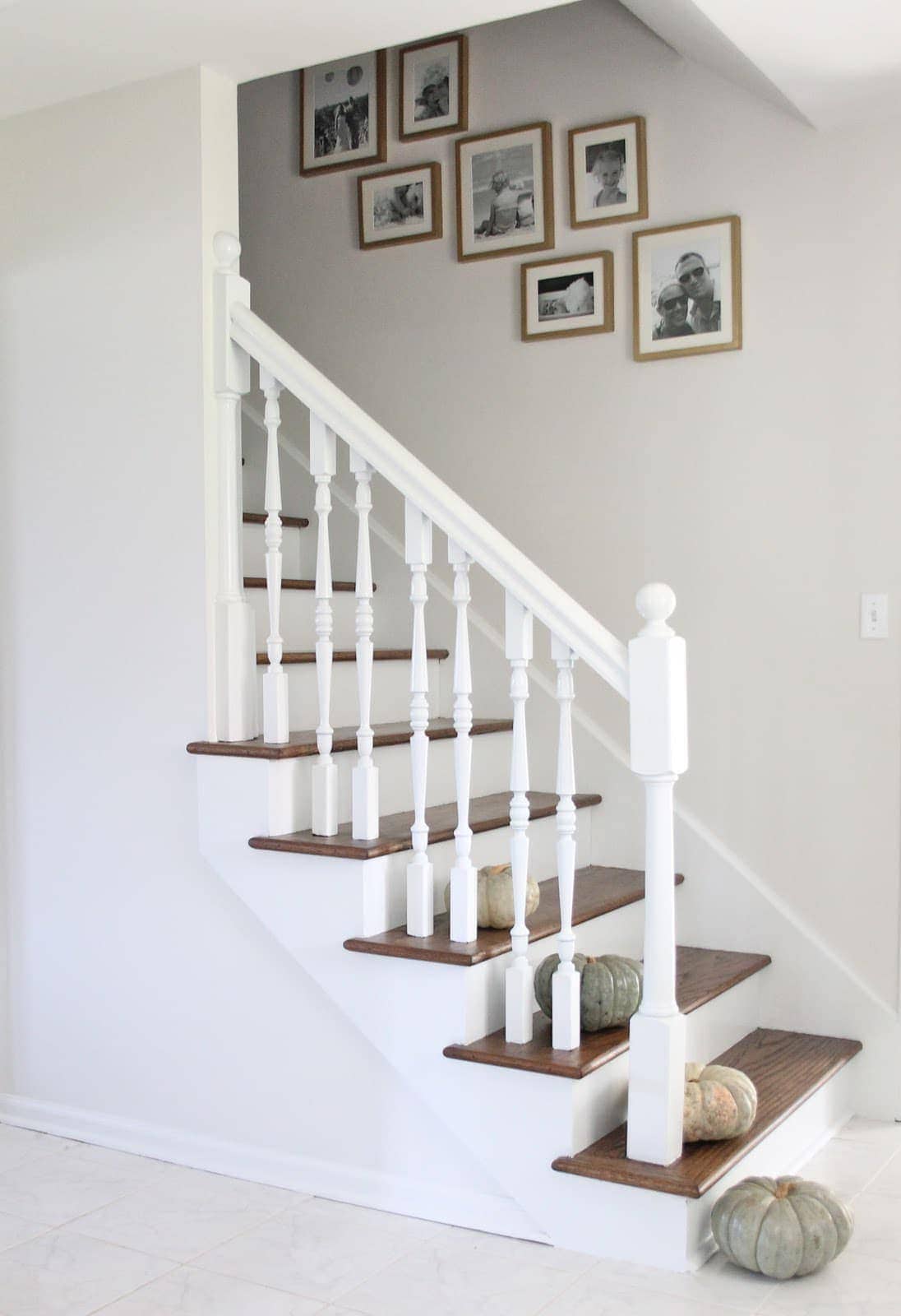
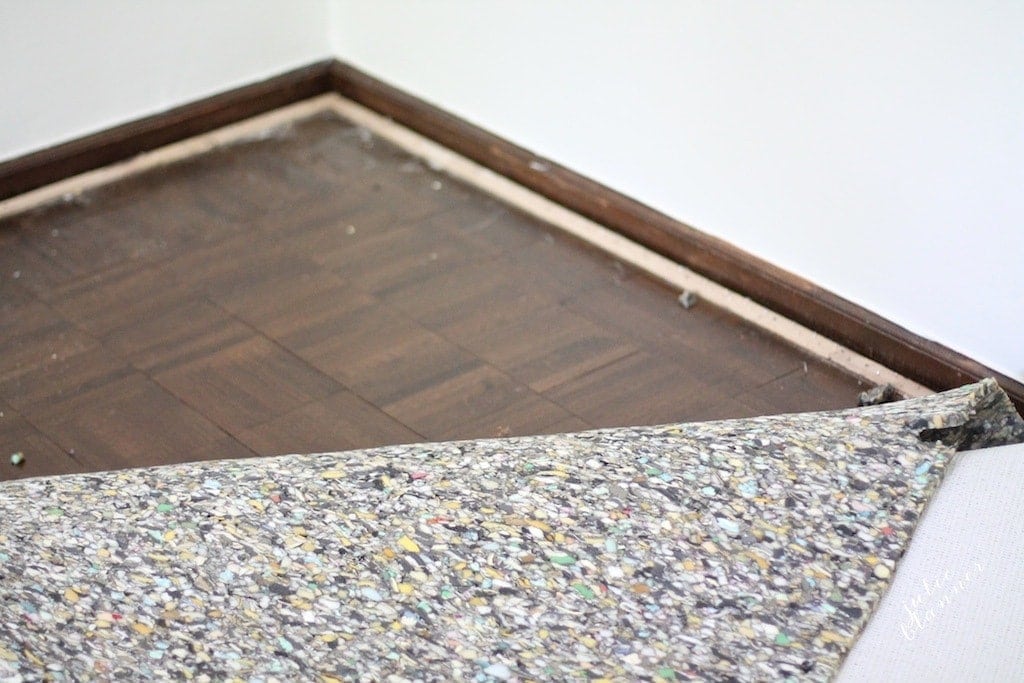

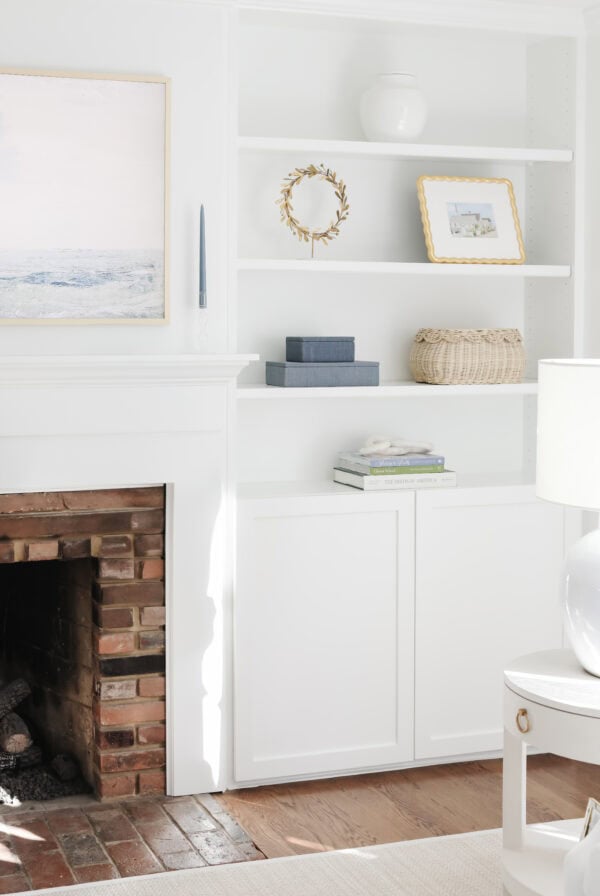
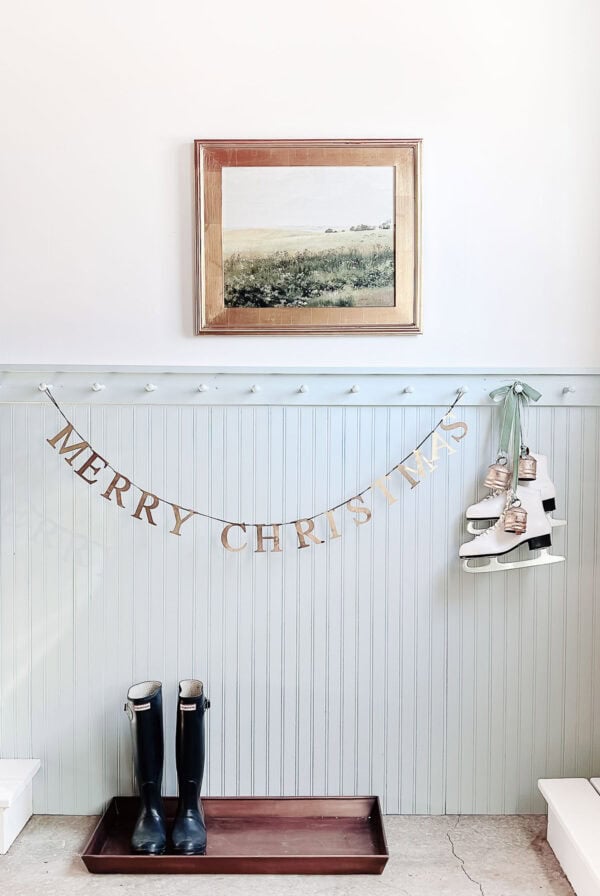






Hi Julie,
When we bought our house 16yrs ago, I knew we have hardwood floors in our living room and bedrooms. But the carpet was new and our kids are still toddlers so it makes sense to just keep the carpet. Now we want to remove the carpet but unsure if the hardwood is still good or not.
A friend of ours suggested that if there’s a problem with the wood, we can use laminate flooring . But we wouldn’t know if the wood is still good until the contractor remove the whole carpet right?
Any suggestion? Thanks
Chances are it’s completely salvageable – especially if you’re willing to sand and stain! I personally do not recommend laminate flooring for anything except a basement. You should be able to get a good glimpse by untucking it from a floor board in the corner of the room or closet. That’s what typically takes the hardest hit. That’s where the tack strips are. Even if there are some holes and stains, I would sand and stain versus replacing.
Julie,
what year is the tudor? We are considering a 1974 home. Carpet everywhere. I’m hoping there’s hardwood underneath, but my parents had a 1974 home and they found nothing but subfloor under theirs 🙁 Do things like location, year built, style of home influence what the flooring choice was?
I somehow missed this, I’m so sorry! Ours is 69…you can peel away just a tiny bit. I feel all homes benefit from the character of sand and stain hardwood, but it is typical of a Tudor. Let me know if you need any help!
Hi Julie, I know there are a lot of ‘timbers’ out there- how can I learn what kind of timber flooring we have and if it’s real hardwood? We recently bought a new home and are trying to make sure it’s safe and of good quality. It’s exposed and appears to be stained…. Thank you!
My husband bought a house last year with carpet on the floor. When we started the renovation, we discovered that the original floor is wooden. So we decided to stick on the woods. We develop the flooring and now, we are loving the floor of our house.
YAY! That’s so exciting!
I have heard of instances where people buy a home, tear out the carpet and realize that there are beautiful wood floors underneath. That would definitely make your day! I wish had beautiful floors like that, but underneath my carpet there is just concrete.
I’m with you, Whitney! We just have one room of parquet…but surprises are sure nice!